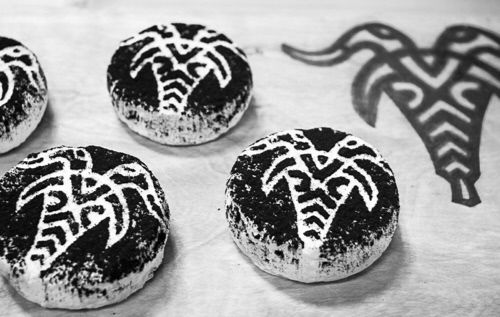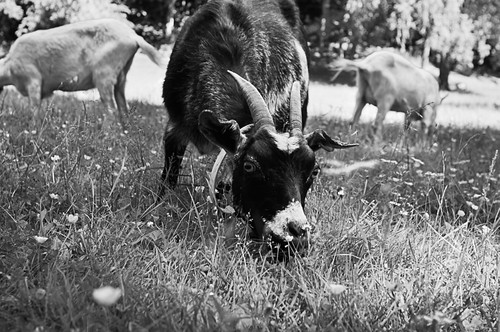From the beginning of June to the middle of August you can go by boat from Aker pier in Oslo to Håøya, an island in the Oslo fjord, in about an hour. Having disembarked, follow the gravel road until you reach a fence which you follow till you reach a wooden construction. On your right, you can see a clearing about 50 metres away. Proceed to the clearing and you’ll arrive at Håøya nature workshop, a cooperative consisting of a cook, a dairy technologist, and a goat farmer. The building in which they work and sell their products have no running water and no electricity, meaning that this is really a work of passion.
Due to changing use of this lovely island, former meadows have gradually been turned into forests and in order to counteract this, the goat farmer Helge Haugen has brought his Kashmir goats across the fjord from Sætre and let them graze the northern part of the island the last two years. In fact, Helge started breeding goats because he bought an overgrown farm and needed goats to open his property. Having worked with cheese for many years, the cook Yngve persuaded Helge to start a temporary goat farm on the island in order to produce goat cheese. However, the goats had never been milked, and the first trials started in February this year. After a lot a of work, most of the goats are willing to be milked by both female and male volunteers. Having finished the milking, the milk is brought about 50 metres to the house inside of which is a small dairy where rennet is added to the milk in order to separate the curd from the whey. The curd is laid in small, cylindrical containers with holes such that the whey can flow out and be collected in a bucket. Once a day, the whey is used to bake bread in a wood-fired oven. Since the milk is not heated, their cheeses are unpasteurised and very tasty.
The cheeses, having about the same size as an ice hockey puck, are for sale at the house of the cooperative, and to select restaurants and shops. Customers can choose between freshly made or mature cheese besides having them covered with crushed juniper needles, cuckoo flower or charcoal.
Having an appointment with Yngve, he readily showed me the dairy and their products and willingly let me taste their cheese, bread and apple juice., a wholesome meal indeed. Having talked about their enterprise, we walked to the milking house, that is the wooden building I passed earlier. Helge, being a practical person, had built it on his property, freighted it in parts to Håøya and assembled it. The goats walk up a ramp, then they will put their heads through some openings in a wall in order to reach what they like, while they are being milked at the same time. After milking, they are allowed to walk down a second ramp such that more goats can be milked. Unfortunately, milking times were early in the morning and late in the evening, while the arrival and departure times for the boat required that I had to stay one night on the island in order to see it.
While the female goats and their kids are free to go near the house of the workshop, the male goats consisting of two bucks and some which are castrated are living on their own in two separate areas on the northern part of the island from April to October. There, they are welcome to graze whatever they find in order to open the landscape. I entered their enclosures and tried to find them without result. Anyway, Yngve told me that they had seen them by going near the island by boat and calling for them.
Having returned, I found the goats and the kids on a meadow, busily eating grass and leaves, while some of them were ruminating or sleeping.
Visitors arrived occasionally at the house of the cooperative, tasting the products and buying whatever they wanted. Approaching the time for the boat’s return to Oslo, I had to say goodbye to Yngve while he was preparing to receive another group of guests.


